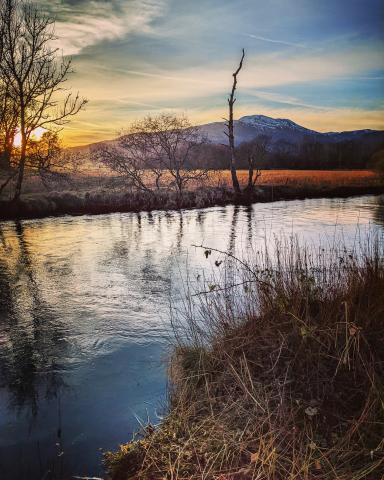Analysis of high frequency time series of water temperatures in the River Gairn
Rivers are a critical aspect of Scotland’s environment; river ecology and biodiversity are both sensitive to changes in water temperature. Importantly, rivers are also important for key Scottish industries such as salmon fishing and the whisky industry, and understanding the drivers of river temperature changes is important to preserving and regulating these industries.
Hydrologists at The James Hutton Institute have been studying the dynamics of water temperatures in river catchments of the North-East of Scotland using both long-term, irregularly spaced time series (more than a hundred years) and shorter high-frequency regular automated observations. The current study focuses on the latter case where an hourly water temperature time series recorded automatically in the Gairn catchment (from 2012 to 2017) was analysed along with measurements of seven environmental covariates.
We analysed a long series of five years with one covariate (flow), a medium series of two years with three covariates (flow, air temperature, rainfall), and a short series of fifty days with seven covariates (flow, air temperature, rainfall, wind speed, wind direction, solar radiation, soil temperature). The number of covariates varies in the three series because we only considered dynamic covariates with no missing values.
The series were characterised by complex features such as non-linearity, non-Normality, non-stationarity, and long memory. To address these issues, BioSS researchers have developed non-homogeneous Markov Switching Autoregressive Models (MSARMs) to model these complex time series. This type of statistical model uses hidden states to represent underlying, unobserved characteristics of the system while quantifying the effect of observed environmental covariates on the time series. Numerical-based Bayesian inference was used to fit the model to the data, classifying the River Gairn temperatures into hidden states with different dynamics, restore the missing values, and select the covariates that affect most each observed time series (long, medium, and short).
The model revealed that switches between these regimes happen in advance of seasonally driven changes and identifies that flow rate is an important driver for medium/long timescale river temperature dynamics, air temperature is important on medium/short timescales, and that solar radiation levels and soil temperature are important drivers of short timescale dynamics.
This approach is very general and can be applied to other hydrological variables, data from different catchments, and other environmental highly correlated time-series with non-linear dynamics. Coupled with other algorithms based on MSARMs, these models can also be used to simulate data describing future changes to hydrological characteristics under specific projections of climate change, as well as helping to estimate the uncertainty in such projections.

This work was done in collaboration with Sheila Gibbs, Miriam Glendell, Rachel Helliwell, Ina Pohle (The James Hutton Institute), and Roberta Paroli (Catholic University of Milan). This research was funded by the Scottish Government’s Rural and Environment Science and Analytical Services Division.

